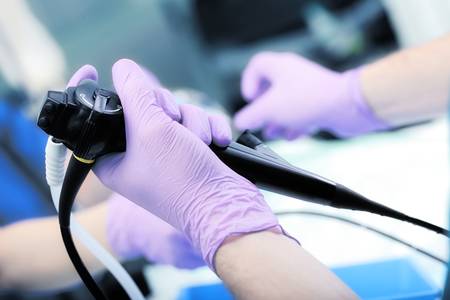What is a Gastroscopy?
A gastroscopy, also known as upper endoscopy, is a common diagnostic procedure in which an endoscope is utilised to view the inner chambers of the top segment of the gastrointestinal tract, namely the oesophagus, stomach and the initial portion of the small intestine – the duodenum. An endoscope is an apparatus that holds a light and camera on one end, with the other outer section connected to a monitor. It aids in capturing detailed images of the gastric tract and displaying them with high clarity on the screen

Procedure
A gastroscopy is carried out in a well-equipped diagnostic facility or hospital by a healthcare professional. The patient is asked to don loose comfortable clothing or is provided with a clean hospital gown in case their clothes are not convenient to proceed with the test. Prior to the gastroscopy, the patient is administered local anesthesia utilizing a spray on their throat, so as to lessen sensitivity in the area while inserting the endoscope.
Following this, the patient is told to lie down on their left side on the hospital bed and the doctor inserts the endoscope at the rear end of the mouth, instructing the patient to swallow the starting segment of the tube. The tube is then maneuvered such that it passes all along the oesophagus and stomach. The entire protocol takes only about 10 – 15 minutes and the patient can resume normal activities at home and work post the gastroscopy.
Risks and Side Effects
Endoscopy is a relatively safe procedure, but there are certain risks involved.
-
- Accidental tearing of a blood vessel in the oesophagus or stomach leading to bleeding
- Internal bleeding that can further result in the elimination of black stools with a rough, tar-like texture
- Pain in the neck, chest, and stomach
- Discomfort and aching while swallowing food
- Breathing problems
- Fever
- Nausea and vomiting
